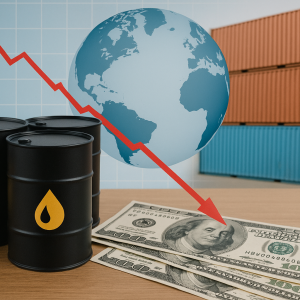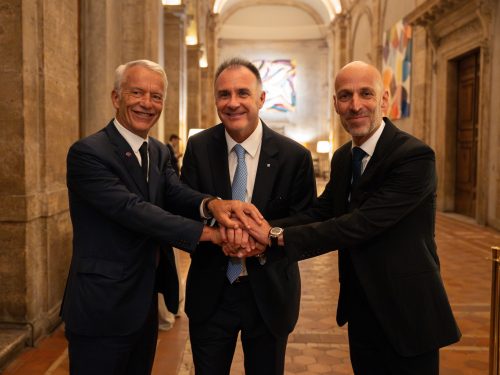Inflation has receded, but the economy is weak. Industry and services still struggling
Saturday 16 December 2023
Share on
Inflation has receded, but rates are still high and the economy is weak. Both services and industry, which is seeing some light, are still struggling. Expensive credit is holding back investments, while the labour market is not pushing consumption. Record tourism will keep the Italian economy afloat in 2023. Italian exports are struggling to recover in the face of fragile consumption in the Eurozone. The US economy is healthy, the emerging economies almost all growing.
The Italian and International Economy in Brief
- Stagnation phase. Italy's GDP is estimated to be almost flat in Q4, after +0.1% in Q3: both services and industry remain weak. The return of inflation helps, but interest rates will remain at highs for a few more months and credit is too expensive. World trade and Italian exports lack real momentum, due to wars and uncertainty. The cost of gas and oil has not soared, but remains historically high (in December, 39 €/mwh and 79 $/barrel).
- Inflation down. Italian inflation fell again in November (+0.7% per year, from +1.7%), thanks to a favourable trend in all components. Energy prices fell the most (-24.4% from -19.7%), while food prices (+5.8% from +6.3%) and also those of other goods (+2.4% from +2.9%) and services (+3.7% from +4.1%) continued to slow. The core measure (+3.1%) is still high.
- Rates still high. In December, the rates of the FED (5.50%, last rise in July) and the ECB (4.50%) remained firm. In the US, the scenario outlined by futures is of a first cut in March 2024: i.e., rates at 7-month highs. In the Eurozone, the markets expect similar moves, with cuts in 2024. The risk of new hikes in the US (and Europe) cannot be ruled out, but falling inflation has made this less likely. Meanwhile, the Italian BTP fell 0.95 points from its October peak (the Bund 0.65).
- Weak services. The RTT index (CSC-TeamSystem) continued in October to signal a contraction in services activity. That would have moderated in November according to the PMI (to 49.5, from 47.7), but may have continued judging by the further erosion of business confidence in the sector.
- Industry: some light. Q4 promises to be light and dark for industry, after a barely positive Q3 (+0.2% added value, but -2.1% trend). In October, RTT reported rising turnover, but due to stock decumulation: -0.2% production (-2.0% since the beginning of the year); half of the sectors are falling (textiles -11.3% trend), half are growing (pharmaceuticals +10.4%). In November in manufacturing the PMI fell (44.4 from 44.9), but business confidence shows a recovery (96.6 from 96.1).
- Expensive credit holds back investment. In October, the cost of credit for Italian businesses rose again (5.46% on average, 5.95% for small businesses), but the fall in loans slowed down (-5.5% per year, from a low of -6.7%) and non-performing loans shrank for the second month (19 billion). Difficult credit conditions reduced their use to finance investments: corporate investments in plant and machinery recorded their second decline in a row (-0.9% in Q3, -0.4% in Q2), while those in construction recovered (+0.6% in non-residential buildings, +0.4% in housing) after the sharp drop in Q2. Total investment declined slightly in Q3 (-0.1%), after the slump in Q2 (-2.0%).
- Labour does not drive consumption. In 2023 the nominal wage bill in the private sector is estimated to grow by 5.8%, compared to 5.6% in Q3, due to the expansion of employment and wages expected in Q4. The public sector, in the absence of contract renewals, is holding back wage growth. With annual inflation of 5.7% acquired in November, we do not see a labour market boost to household consumption: robust in Q3 (+0.7%), it seems to have slowed down in Q4.
- Hard export recovery. After a recovering Q3, sales of Italian goods abroad grew in October, thanks mainly to non-EU flows (OPEC and the US). The outlook for the last months of 2023, however, remains weak: the demand for Italian manufacturing goods from abroad decreased, albeit at a slower pace; in November, expectations for world trade were still negative (48.1 from 47.5).
- Eurozone: consumption in fragile recovery. Household consumption in the area returned to growth in Q3 (+0.3%), after having been at a standstill for six months. Consumer confidence, however, after a gradual recovery, worsened in October and November (-17.4 on average, from -16.3 in Q3), especially expectations about the economic situation (-25.4 from -23.3), signalling a fragile outlook.
- USA in good health. GDP in Q3 was revised upwards further (+1.3% from +1.2%), thanks to the contribution of all components (consumption +0.6%), except for net exports; residential investment rebounded after nine quarters. Industrial production fell in October (-0.6%), although the jump in the Chicago Purchasing Managers' Index (55.8 from 44.0) prefigures a rebound in November. Consumer confidence improved strongly.
- Emergents almost all on the rise. In China, manufacturing is growing again, driven by new orders linked to domestic demand, while foreign demand is weak. In Russia too, growth is brisk, orders are rising, but foreign demand is weak. In India, industry has been growing at a high rate for months, and inflationary cost pressures are falling to a minimum. Only in Brazil is industry continuing to contract and orders are falling.
Focus of the month - Record-breaking tourism keeps the Italian economy afloat
- Decisive for GDP dynamics in 2023. There is one item among the components of Italian GDP (just +0.1% tendential in Q3 2023) that did very well in the first nine months of this year and is sustaining the overall dynamic: it is part of the export of services (+4.1%) and is the expenditure of foreigners travelling in Italy, i.e. a large part of the direct economic value of tourism in the country.
- Never before has spending by foreign tourists been so high. The contribution of foreigners to the tourism boom was crucial: in September 2023, the expansion of foreign travellers' spending in Italy continued: +11.8% over 2022 (at current prices); the record was reached in July. This spending, when compared to pre-pandemic levels, shows a +24.5% over 2019. Which is only in small part due to the increase in prices of tourist services (about +6.0% in 2023). Overall, by the end of 2023, revenue from foreign tourism will reach over EUR 50 billion, far exceeding the EUR 30 billion from Italian tourism abroad.
- Crucial for the Italian (and Spanish) economy. The upturn in travel, starting in 2021 and then more strongly in 2022 and 2023, has had a positive impact especially in countries where the (total) weight of tourism as a percentage of GDP is greatest, such as Spain and Italy (around 11% of added value). In fact, the recovery of tourism was reflected in these countries in a very positive consumption and employment dynamic, as also highlighted in the latest IMF forecast report (WEO of October 2023).
- Extra-savings fuel the consumption of services. The decumulation of extra-savings set aside during the pandemic played a decisive role in the recovery. In Italy, the propensity to save of households was well below pre-Covid levels this year, registering 6.7% in Q1 and 6.3% in Q2 (compared to 8.2% on average in 2015-2019). Households also decumulated savings abroad, spending it at home, but also in Italy and elsewhere on travel and tourist trips. Excess savings, both Italian and foreign, thus fuelled spending on services in Italy, which increased in all three quarters of 2023: +0.4% in Q1, +2.4% in Q2 and +1.4% in Q3. This expansion seems to reflect, in particular, more substantial support from wealthier households, which seem to have increased their marginal propensity to consume because they are more able to finance their leisure spending, having accumulated more 'extra' resources during the pandemic (Bank of Italy, QEF no. 797 of October 2023).
- Accommodation services at their best. The excellent tourism performance was reflected in the Italian hotel sector, which enjoyed a real boom. Turnover in accommodation services, which fared better than total services, was already above pre-pandemic values in 2022 and continued to grow this year: +28.8% in Q3 compared to the same period in 2019, of which +7.1% compared to Q3 2022. Optimism therefore seems to have returned among hospitality businesses: according to the Booking Barometer, 41% of Italian hoteliers expect 2023 to be the year with the highest turnover ever.
- Arrivals can still grow. Despite recent records, there is still room for growth in the Italian accommodation sector: bed utilisation in hotels has risen to 48.3% in 2022, compared to 49.0% in 2019, and is expected to have risen again in 2023, but still on values that may rise further. Non-hotel establishments can also continue to make an important contribution: up to 2022, admissions in such establishments grew more than those in hotels.
- But uncertain prospects. The revival of tourism is complete in terms of levels, but the return to the pre-pandemic growth trajectory could be delayed by the stagnation phase affecting the Italian and world economy. It will be decisive to grasp the changes taking place in the sector, which Italian companies seem to have well identified: travellers' preferences are more oriented towards luxury experiences (+57% in the last decade the number of 5-star hotels); new destinations and climate change; new 'virtual' technologies to prepare for (replace?) 'in-person' travel.






















